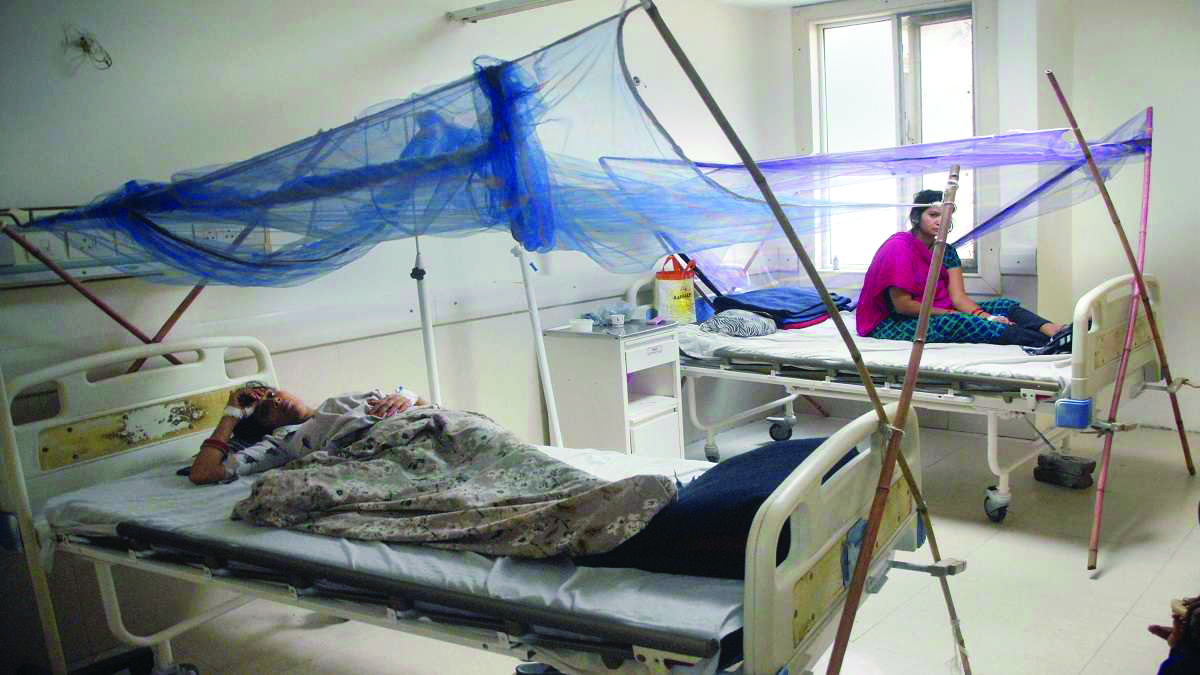Tropical climate, waterlogging... reasons why Delhi is prone to dengue

New Delhi: Delhi is witnessing a significant surge in vector-borne diseases, with the city recording its highest-ever weekly dengue cases this year. Between January and September, the capital has seen 870 dengue cases, with 197 of those reported in the week ending September 14 alone. In the same period, malaria cases have reached a three-year high with 299 reported, 37 of which occurred in the second week of September. Chikungunya cases are also rising, totaling 36 so far this year — four times higher than the entire count in 2023. Speaking to Millennium Post, experts highlighted several factors making Delhi particularly vulnerable to these diseases, including its tropical climate, waterlogging from monsoons and inadequate waste management. Last year, the city experienced its third-worst dengue outbreak in the past 8 years, peaking in August and September with a total of 9,266 cases and 19 fatalities, according to the MCD records.
Mohsin Wali, a senior consultant in internal medicine at Sir Ganga Ram Hospital, noted an increase in dengue and malaria cases at the facility, including few in the emergency ward. He attributed this rise to “changing patterns of rain,” highlighting that the monsoon rains, combined with high humidity, create ideal conditions for the Aedes aegypti mosquito — responsible for transmitting dengue — to thrive. “Dengue mosquitoes breed in clean water. As long as water is stored in open areas, people will remain vulnerable to the disease,” he explains. Delhi’s monsoon season, spanning from June to September, typically brings heavy rainfall, leading to waterlogging in several areas due to inadequate civic infrastructure. These stagnant water bodies become perfect breeding grounds for mosquitoes, significantly increasing the risk. A scientist from the National Institute of Malaria Research (NIMR) points out that “inadequate sanitation and waste management further exacerbate the problem. The accumulation of improperly disposed waste creates breeding sites for mosquitoes.” Despite efforts by the authorities, including inspections of over 2.6 crore houses for mosquito breeding, the number of legal actions and prosecutions launched this year stands at 36,000 — lower than previous year. The MCD, which has sprayed approximately five lakh houses so far in 2024, compared to 13 lakh in 2023, attributes this discrepancy to the increase in testing centres.
A senior MCD official explains: “Last year, we had around 36 testing centres. This year, that number has risen to 900, making the recorded cases appear inflated due to wider testing coverage.” However, experts argue that broader testing is just one aspect of the problem. The city’s warm and humid environment fall within the optimal temperature range for the Aedes mosquito’s activity and dengue virus replication. Moreover, Delhi’s population density and migration patterns complicate the fight. “People moving in and out of the city inadvertently spread the virus to new areas, making it harder to contain outbreaks,” says the scientist from the NIMR. This further underscores the need for a coordinated, region-wide strategy to combat the spread of dengue and other diseases. Wali also stresses on public awareness in controlling the spread of the diseases.



